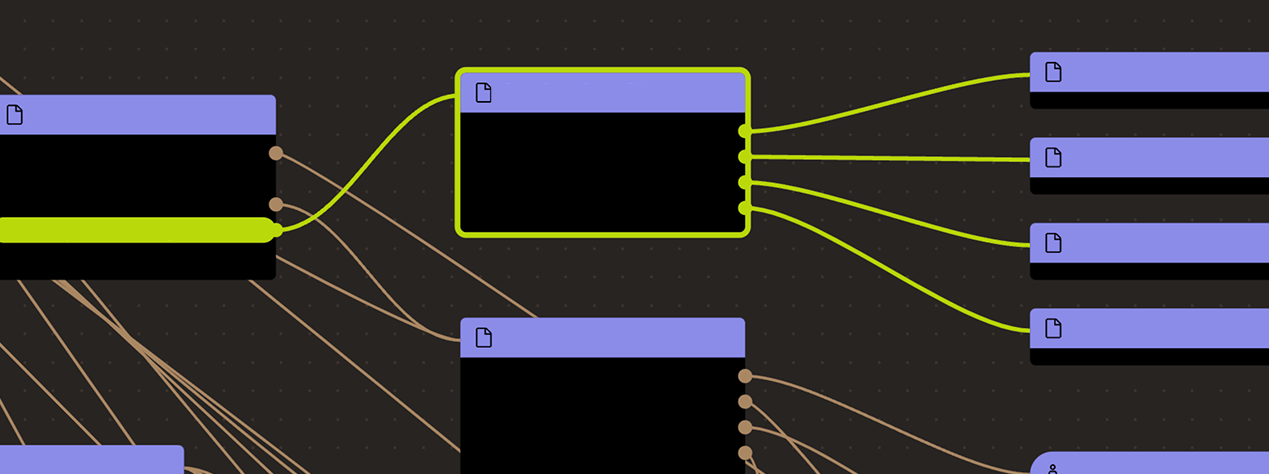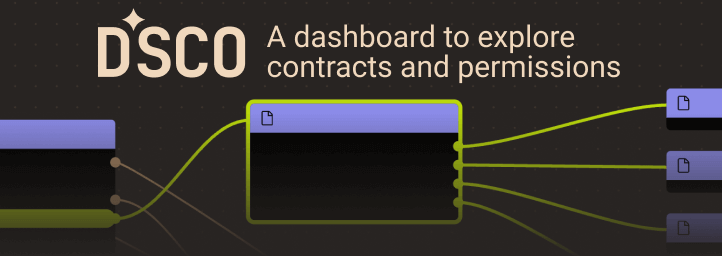Search
Search for projects by name
 Ancient8
Ancient8
Badges
About
Ancient8 Chain is a gaming-focused community-driven Ethereum Layer 2 built using OP Stack.
Badges
About
Ancient8 Chain is a gaming-focused community-driven Ethereum Layer 2 built using OP Stack.
Why is the project listed in others?
Consequence: projects without a sufficiently decentralized set of challengers rely on few entities to safely update the state. A small set of challengers can collude with the proposer to finalize an invalid state, which can cause loss of funds.
Consequence: projects without a data availability bridge fully rely on single entities (the sequencer) to honestly rely available data roots on Ethereum. A malicious sequencer can collude with the proposer to finalize an unavailable state, which can cause loss of funds.
Learn more about the recategorisation here.
2024 Nov 04 — 2025 Nov 03
The section shows the operating costs that L2s pay to Ethereum.
2024 Nov 04 — 2025 Nov 03
This section shows how much data the project publishes to its data-availability (DA) layer over time. The project currently posts data to![]() Celestia.
Celestia.
2024 Nov 04 — 2025 Nov 03
This section shows how "live" the project's operators are by displaying how frequently they submit transactions of the selected type. It also highlights anomalies - significant deviations from their typical schedule.
2025 Oct 05 — Nov 04
Funds can be stolen if
Funds can be lost if
MEV can be extracted if
Fraud proofs allow actors watching the chain to prove that the state is incorrect. Interactive proofs (INT) require multiple transactions over time to resolve. Only one entity is currently allowed to propose and submit challenges, as only permissioned games are currently allowed.
Proof construction and state derivation fully rely on data that is posted on Celestia. Sequencer tx roots are not checked against the Blobstream bridge data roots onchain, but L2 nodes can verify data availability by running a Celestia light client.
There is no window for users to exit in case of an unwanted regular upgrade since contracts are instantly upgradable.
Only the whitelisted proposers can publish state roots on L1, so in the event of failure the withdrawals are frozen.
Data is posted to Celestia
Transactions roots are posted onchain and the full data is posted on Celestia. Since the Blobstream bridge is not used, availability of the data is not verified against Celestia validators, meaning that the Sequencer can single-handedly publish unavailable roots.
Funds can be lost if the sequencer posts an unavailable transaction root (CRITICAL).
Funds can be lost if the data is not available on the external provider (CRITICAL).
- Introducing Blobstream: streaming modular DA to Ethereum
- Derivation: Batch submission - OP Mainnet specs
- BatchInbox - address
- OptimismPortal2.sol - source code, depositTransaction function
Updates to the system state can be proposed and challenged by permissioned operators only. If a state root passes the challenge period, it is optimistically considered correct and made actionable for withdrawals.
Proposers submit state roots as children of the latest confirmed state root (called anchor state), by calling the create function in the DisputeGameFactory. A state root can have multiple conflicting children. Each proposal requires a stake, currently set to 0.0 ETH, that can be slashed if the proposal is proven incorrect via a fraud proof. Stakes can be withdrawn only after the proposal has been confirmed. A state root gets confirmed if the challenge period has passed and it is not countered.
Challenges are opened to disprove invalid state roots using bisection games. Each bisection move requires a stake that increases expontentially with the depth of the bisection, with a factor of 1.09493. The maximum depth is 73, and reaching it therefore requires a cumulative stake of 0.00 ETH from depth 0. Actors can participate in any challenge by calling the defend or attack functions, depending whether they agree or disagree with the latest claim and want to move the bisection game forward. Actors that disagree with the top-level claim are called challengers, and actors that agree are called defenders. Each actor might be involved in multiple (sub-)challenges at the same time, meaning that the protocol operates with full concurrency. Challengers and defenders alternate in the bisection game, and they pass each other a clock that starts with 3d 12h. If a clock expires, the claim is considered defeated if it was countered, or it gets confirmed if uncountered. Since honest parties can inherit clocks from malicious parties that play both as challengers and defenders (see freeloader claims), if a clock gets inherited with less than 3h, it generally gets extended by 3h with the exception of 6h right before depth 30, and 1d right before the last depth. The maximum clock extension that a top level claim can get is therefore 10d. Since unconfirmed state roots are independent of one another, users can decide to exit with a subsequent confirmed state root if the previous one is delayed. Winners get the entire losers’ stake, meaning that sybils can potentially play against each other at no cost. The final instruction found via the bisection game is then executed onchain in the MIPS one step prover contract who determines the winner. The protocol does not enforce valid bisections, meaning that actors can propose correct initial claims and then provide incorrect midpoints. The protocol can be subject to resource exhaustion attacks (Spearbit 5.1.3).
The system has a centralized operator
MEV can be extracted if the operator exploits their centralized position and frontruns user transactions.
Users can force any transaction
Because the state of the system is based on transactions submitted on the underlying host chain and anyone can submit their transactions there it allows the users to circumvent censorship by interacting with the smart contract on the host chain directly.
Regular exits
The user initiates the withdrawal by submitting a regular transaction on this chain. When a state root containing such transaction is settled, the funds become available for withdrawal on L1 after 3d 12h. Withdrawal inclusion can be proven before state root settlement, but a 7d period has to pass before it becomes actionable. The process of state root settlement takes a challenge period of at least 3d 12h to complete. Finally the user submits an L1 transaction to claim the funds. This transaction requires a merkle proof.
Forced messaging
If the user experiences censorship from the operator with regular L2->L1 messaging they can submit their messages directly on L1. The system is then obliged to service this request or halt all messages, including forced withdrawals from L1 and regular messages initiated on L2. Once the force operation is submitted and if the request is serviced, the operation follows the flow of a regular message.
EVM compatible smart contracts are supported
OP stack chains are pursuing the EVM Equivalence model. No changes to smart contracts are required regardless of the language they are written in, i.e. anything deployed on L1 can be deployed on L2.

Ethereum
Roles:
Allowed to challenge or delete state roots proposed by a Proposer.
Allowed to pause withdrawals. In op stack systems with a proof system, the Guardian can also blacklist dispute games and set the respected game type (permissioned / permissionless).
Allowed to post new state roots of the current layer to the host chain.
Allowed to commit transactions from the current layer to the host chain.
Actors:
A Multisig with 4/10 threshold.
- Can upgrade with no delay
- L1CrossDomainMessenger ProxyAdmin
- SuperchainConfig ProxyAdmin
- SystemConfig ProxyAdmin
- L1StandardBridge ProxyAdmin
- DisputeGameFactory ProxyAdmin
- OptimismPortal2 ProxyAdmin
- DelayedWETH ProxyAdmin
- L1ERC721Bridge ProxyAdmin
- AnchorStateRegistry ProxyAdmin
- OptimismMintableERC20Factory ProxyAdmin
- Can interact with SystemConfig
- Can interact with AddressManager
- set and change address mappings ProxyAdmin
- Can interact with DelayedWETH
- can pull funds from the contract in case of emergency
- A Challenger - acting directly
- A Guardian - acting directly
Participants (10):
0xFe0a…e2d40x8117…E7Ac0xA073…bda20xF331…647D0xF0B7…A4f00xa400…e6e40x3840…Fd5f0xa0C6…90380xefCf…dD5C0x4D80…5BAe- A Sequencer - acting directly
- A Proposer - acting directly

Ethereum
The dispute game factory allows the creation of dispute games, used to propose state roots and eventually challenge them.
- Roles:
- admin: ProxyAdmin; ultimately Conduit Multisig 1
The OptimismPortal contract is the main entry point to deposit funds from L1 to L2. It also allows to prove and finalize withdrawals. It specifies which game type can be used for withdrawals, which currently is the PermissionedDisputeGame.
- Roles:
- admin: ProxyAdmin; ultimately Conduit Multisig 1
- This contract stores the following tokens: ETH.
This is NOT the shared SuperchainConfig contract of the OP stack Superchain but rather a local fork. It manages the PAUSED_SLOT, a boolean value indicating whether the local chain is paused, and GUARDIAN_SLOT, the address of the guardian which can pause and unpause the system.
- Roles:
- admin: ProxyAdmin; ultimately Conduit Multisig 1
- guardian: Conduit Multisig 1
Sends messages from host chain to this chain, and relays messages back onto host chain. In the event that a message sent from host chain to this chain is rejected for exceeding this chain’s epoch gas limit, it can be resubmitted via this contract’s replay function.
- Roles:
- admin: ProxyAdmin; ultimately Conduit Multisig 1
The main entry point to deposit ERC20 tokens from host chain to this chain.
- Roles:
- admin: ProxyAdmin; ultimately Conduit Multisig 1
- This contract can store any token.
Used to bridge ERC-721 tokens from host chain to this chain.
Used to bridge ERC-721 tokens from host chain to this chain.
- Roles:
- admin: ProxyAdmin; ultimately Conduit Multisig 1
The PreimageOracle contract is used to load the required data from L1 for a dispute game.
- Roles:
- owner: Conduit Multisig 1
Contract designed to hold the bonded ETH for each game. It is designed as a wrapper around WETH to allow an owner to function as a backstop if a game would incorrectly distribute funds.
- Roles:
- admin: ProxyAdmin; ultimately Conduit Multisig 1
- owner: Conduit Multisig 1
Contains the latest confirmed state root that can be used as a starting point in a dispute game.
- Roles:
- admin: ProxyAdmin; ultimately Conduit Multisig 1
The MIPS contract is used to execute the final step of the dispute game which objectively determines the winner of the dispute.
A helper contract that generates OptimismMintableERC20 contracts on the network it’s deployed to. OptimismMintableERC20 is a standard extension of the base ERC20 token contract designed to allow the L1StandardBridge contracts to mint and burn tokens. This makes it possible to use an OptimismMintableERC20 as this chain’s representation of a token on the host chain, or vice-versa.
- Roles:
- admin: ProxyAdmin; ultimately Conduit Multisig 1
Value Secured is calculated based on these smart contracts and tokens:
Main entry point for users depositing ERC20 token that do not require custom gateway.
Main entry point for users depositing ETH.
The current deployment carries some associated risks:
Funds can be stolen if a contract receives a malicious code upgrade. There is no delay on code upgrades (CRITICAL).
